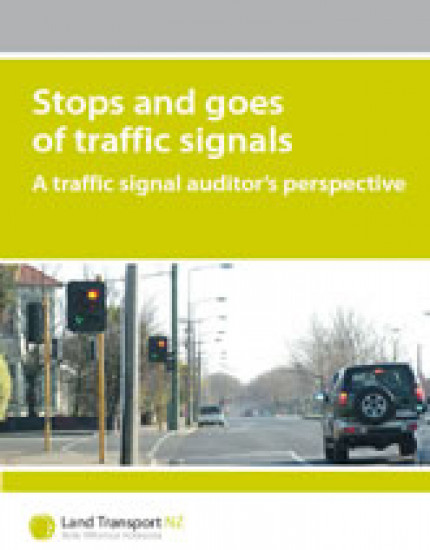
The Signals New Zealand User Group (SNUG) has identified a need to achieve better consistency with the design and operation of traffic signals throughout the country. Land Transport NZ funded the development of a signal audit methodology, where safety and efficiency of traffic signals were examined. A representative number of signal installations, in the area covered by nine territorial local authorities (TLA), were audited by April 2004. All audits included signals administered by the TLAs on behalf of Transit New Zealand (Transit NZ), the road controlling authority (RCA) for state highways.
A review of all nine audit reports has been carried out with the key results summarised in this booklet. Practices in need of improvement are illustrated and commented on, and backed up with examples of good design.
The purpose of this booklet is to draw attention to those elements of traffic signals that the auditors have frequently found to compromise safety and/or efficiency, and to present ways in which these deficiencies could be addressed. Appropriate standards and guidelines are in place, with Austroads Part 7 (2003) the main reference document.
The target audience group for this booklet is engineers who design, construct, install, manage and maintain traffic signals. Therefore, the audit document will contain traffic signal terminology, which will not be explained in this booklet, but may be found in the glossary of terms in Austroads Part 7 (2003).
Section 4 of this booklet details a national analysis of crashes at traffic signals, and the deficiencies that may have contributed to these crash patterns. This analysis was undertaken by Tim Hughes of Land Transport NZ.
The aim of this booklet is to contribute to safer and more efficient installations and operations of traffic signals in New Zealand.